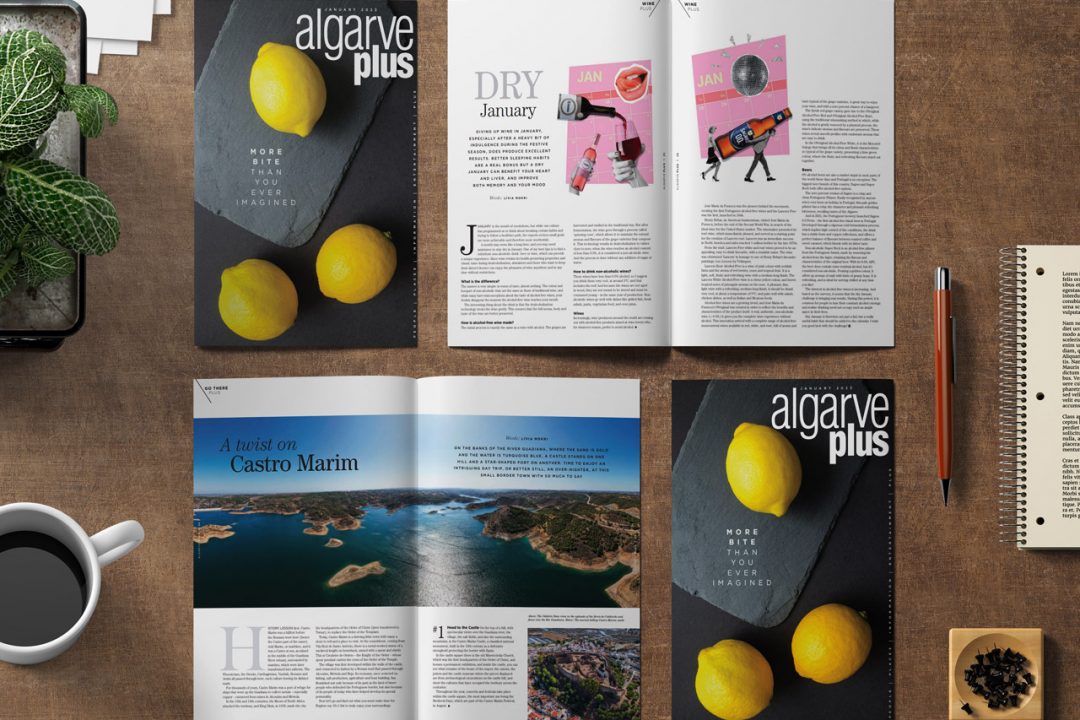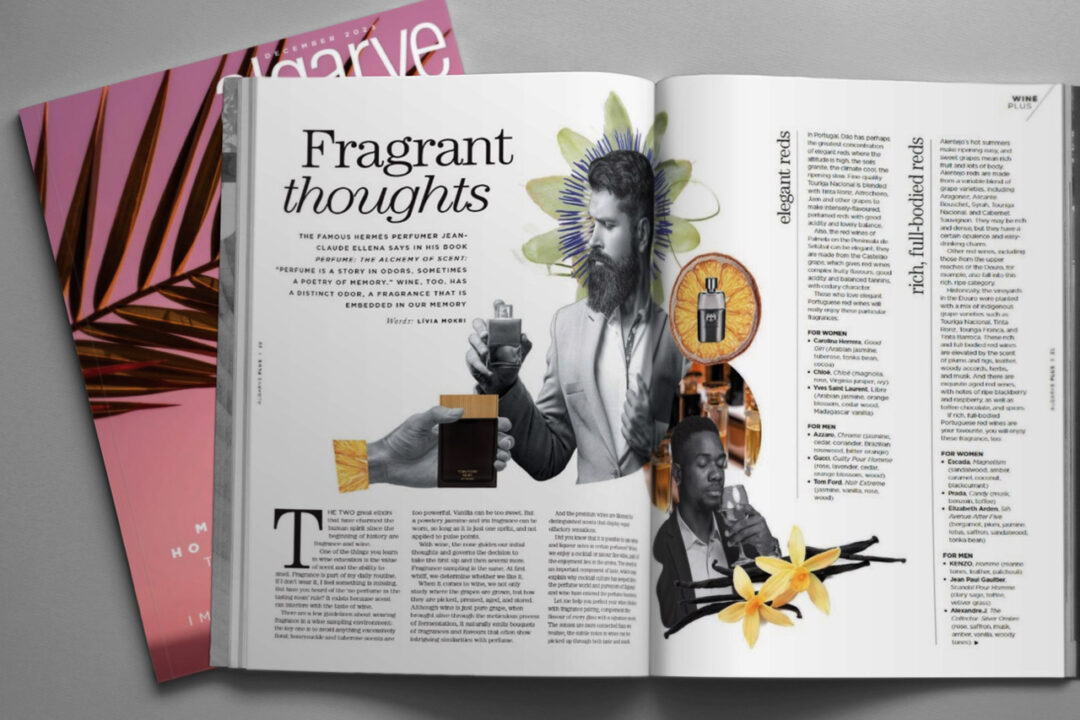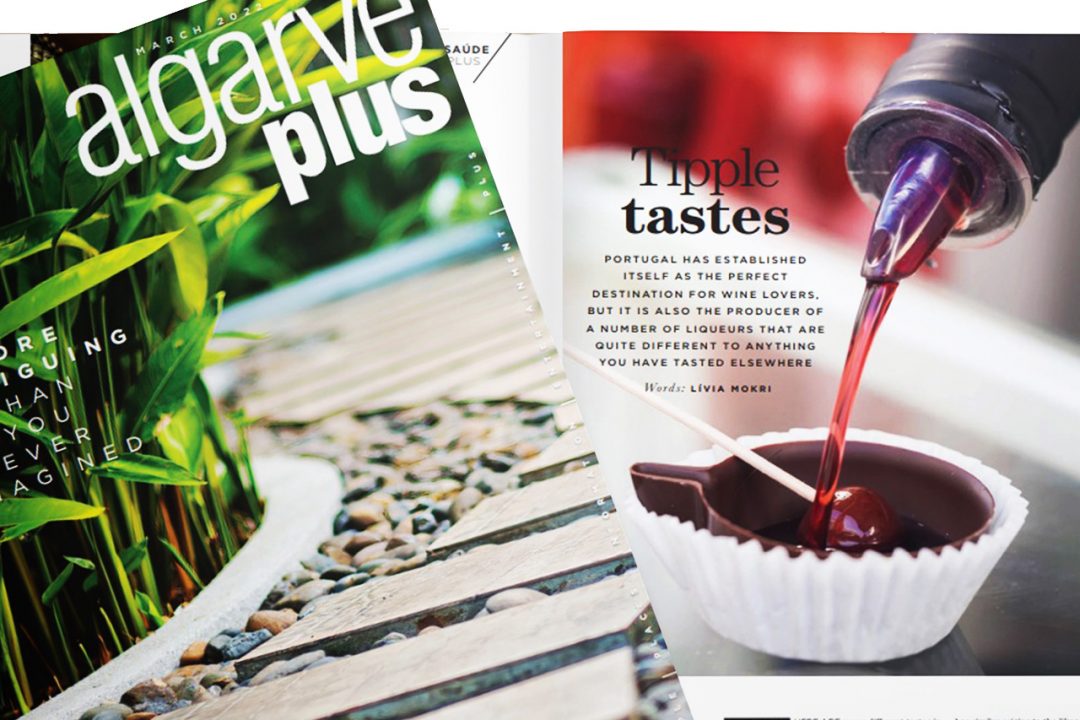Dry January – Giving up wine in January does produce excellent results. Better sleeping habits are a real bonus but a dry January can benefit your heart and liver, and improve both memory and your mood.
January is the month of resolutions but our culture has programmed us to think about breaking certain habits and trying to follow a healthier path, the experts reckon small goals are more achievable and therefore more worthwhile.
It was precisely from this premise that the Dry January movement, which is a one-month alcohol-free challenge.
And it isn’t about giving anything up. But it’s about getting something back: your fun, your energy, your calm, so just get yourself back.
I am happy to share that my new writing in the Algarve Plus Magazine has already been published!
The magazine is readable online or downloaded for free here.
Enjoy!
Or read here the whole article:
Dry January
January is the month of resolutions. Our culture has programmed us to think about breaking habits that no longer support us and trying out a healthier path. On the first days of every year, lists of purposes and to-dos are common. But the history of experience says that the more weight we put on the goals we set for ourselves, the more difficult it is to achieve them effectively. So, the suggestion of experts in the field is to start with small goals: for example, instead of saying ‘in 2023, I will stop drinking alcohol’, decide that, at least throughout the month of January, you will not drink alcohol. In fact, this is the best month to give your liver a break, since December is what we know — too much food, too much drink, too much revelry, and everything that entails.
It was precisely from this premise that the Dry January movement was born in the UK, which is a one-month alcohol-free challenge. And it isn’t about giving anything up.
But it’s about getting something back: your fun, your energy, your calm, so just get yourself back.
And the effects are so wonderful: improvement in sleep and also in your skin, which looks smoother, cleaner, and significantly more luminous. And among many others, the Dry January can benefit your health as well. Your heart, liver, and memory can be better, and even your mood too.
A month may seem like a long time, but most people can be successful. Still, you may need assistance to stay dry in January. And one of my best tips is to find a substitute non-alcoholic drink: beer or wine, which can provide a unique experience.
Since the wine retains its health-promoting properties and classic taste during de-alcoholization, abstainers and all those who want to drink wine without restrictions – while keeping their driver’s license – taking advantage of the many advantages of de-alcoholic wine, can enjoy the pleasures of wine anywhere and anytime without restrictions.
What is the difference?
The answer is very simple: in terms of taste, almost nothing. The color and bouquet of non-alcoholic wine are the same as those of traditional wine, and the consumer will not be disappointed even after tasting it. There are many misconceptions about the taste of alcohol-free wines in the public mind, but your doubts disappear the moment the alcohol-free wine reaches your mouth.
The interesting thing about the drink is that the dealcoholization technology treats the wine gently. This ensures that the full aroma, body and taste of the wine are better preserved.
How the alcohol-free wine made?
The initial process is exactly the same as a wine with alcohol. The grapes are harvested and vinified in the traditional way. But after fermentation, the wine goes through a dealcoholization process, through a physical method called “spinning cone”.
With this process, it is possible to separate the alcohol from the various components of the wine, allowing the drink to maintain the natural aromas and flavors of the grape varieties that compose it, as well as all the other properties that are so important in a wine, including those related to health, namely cardiovascular problems, as it contains polyphenols and antioxidants.
This technology allows dealcoholization to values close to zero. When the wine reaches an alcohol content of less than 0.5%, it can already be considered a non-alcoholic wine.
Because it is made at a low temperature, it preserves the aromas of the wine much better and the final product, in sensory terms, is very similar to wine with alcohol, with the advantage of not having alcohol.
And another important fact, this process is done without any addition of sugar or water.
How to drink non-alcoholic wines?
These wines have less than 0.5% alcohol, so I suggest you drink them very cool, at around 5ºC, including the red! They are wines without aging in wood and therefore are not made to be stored, they must be consumed young, in the same year of production.
Because they are more fruity and light flavors, these wines go well with dishes like grilled fish, fresh salads, pasta, vegetarian food, or even pizza!
Wines
One thing is certain: more and more wine producers around the world are coming out with alcohol-free products, including in Portugal.
These wines are aimed at wine lovers who, for whatever reason, and in particular situations, prefer to drink non-alcoholic wine.
José Maria da Fonseca was a pioneer in terms of creating the first Portuguese alcohol-free wines. And the Lancers Free is the first Portuguese non-alcoholic wine, launched in 1944.
Henry Behar, an American businessman visited José Maria da Fonseca, even before the end of World War II, in search of the ideal wine for the United States market. And in the first approach, the winemaker presented the rosé wine, which immediately pleased and served as a starting point for the creation of Lancers rosé.
Lancers was an immediate success in the North American market and the sales reached 1 million pieces by the late 70s.
Since the beginning Lancers Free white and rosé wines have represented, an appealing, easy-to-drink product, with a readable name. The wine was Christened ‘Lancers’ in homage to one of Mr. Henry Behar’s favorite paintings: ‘Las Lanzas’ by Velázquez.
The Lancers Rosé Alcohol-Free is a wine of pink color with reddish hints. The aroma of red berries, roses, and tropical fruit. A light, soft, fruity, and refreshing wine with a medium-long finish.
The Lancers White Alcohol-Free wine presents a citrus-yellow color. Tropical notes of pineapple aromas on the nose. A pleasant, fine, light wine with a refreshing, medium-long finish. It should be drunk very cool, at about a temperature of 5 °C. Pairs well with salads, chicken dishes, as well as Italian and Mexican foods. (Unfortunately, this wine is already not available on the market.)
Alcohol-free wines are a more recent and growing trend, and in 2009, José Maria da Fonseca launched a new alcohol-free range, O%riginal. This brand was created in order to reflect the benefits and characteristics of the product itself. A real, authentic, non-alcoholic wine (< 0.5%) that gives you the complete wine experience without alcohol (https://jmf.pt/loja/)
This innovation arrived with a complete range of alcohol-free monovarietal wines available in red, white, and rosé, full of aroma and taste typical of the grape varieties. A great way to enjoy your wine with a 0% chance of a hangover as well!
The Syrah red grape variety gave rise to the O%riginal Alcohol-Free Red and O%riginal Alcohol-Free Rosé, using the traditional winemaking method. The alcohol is gently removed by a physical process while preserving the wine’s delicate aromas and flavors. These wines reveal smooth profiles with exuberant aromas that are easy to drink.
In the O%riginal Alcohol-Free White, it is the Moscatel Galego that brings all its citrus and floral characteristics so typical of the grape variety, presenting a lime-green color, where the fruity and refreshing flavors stand out together with the smoothness in this easy white wine.
Beers
And apart from the wines, 0% alcohol beers are also a market staple in most parts of the world these days and Portugal is no exception. The biggest beer brands of this country, Sagres and Super Bock also make available their alcohol-free options.
The alcohol-free version of Sagres is a crisp and clean Portuguese Pilsner. Easily recognized by anyone who’s ever been on holiday in Portugal this pale golden pilsner has a crisp dry character and pleasant refreshing bitterness, recalling tastes of the Algarve.
And in 2021, the Portuguese brewery launched Sagres 0.0 Preta – the first alcohol-free black beer in Portugal. This beer has been developed through a rigorous cold fermentation process, which implies high control of fermentation conditions. The drink, characterized by its dark color, stable foam and copper reflections, offers a perfect balance of flavors between roasted coffee and sweet caramel, which blends with its bitter taste.
Non-alcoholic Super Bock is an alcohol-free pilsner from the Portuguese brand, Super Bock, made by removing the alcohol from the Super Bock lager, retaining the flavor and characteristics of the original beer. With its 0.5% ABV, the beer does contain some residual alcohol, but it’s considered non-alcoholic. Pouring a golden color, this beer offers up aromas of malt with hints of grassy hops. It is refreshing, and is ideal for serving chilled at any time you like!
As strange as it sounds, interest in alcohol-free wines is increasing.
And based on the surveys, it seems that the dry January challenge is bringing real results. During this period it is common for people to lose their constant alcohol cravings and realize drinking need not occupy such an ample space in their lives.
Dry January is therefore not just a fad, but a really useful habit that should be added to the calendar. I wish you in your challenge a good luck!






No Comments Found